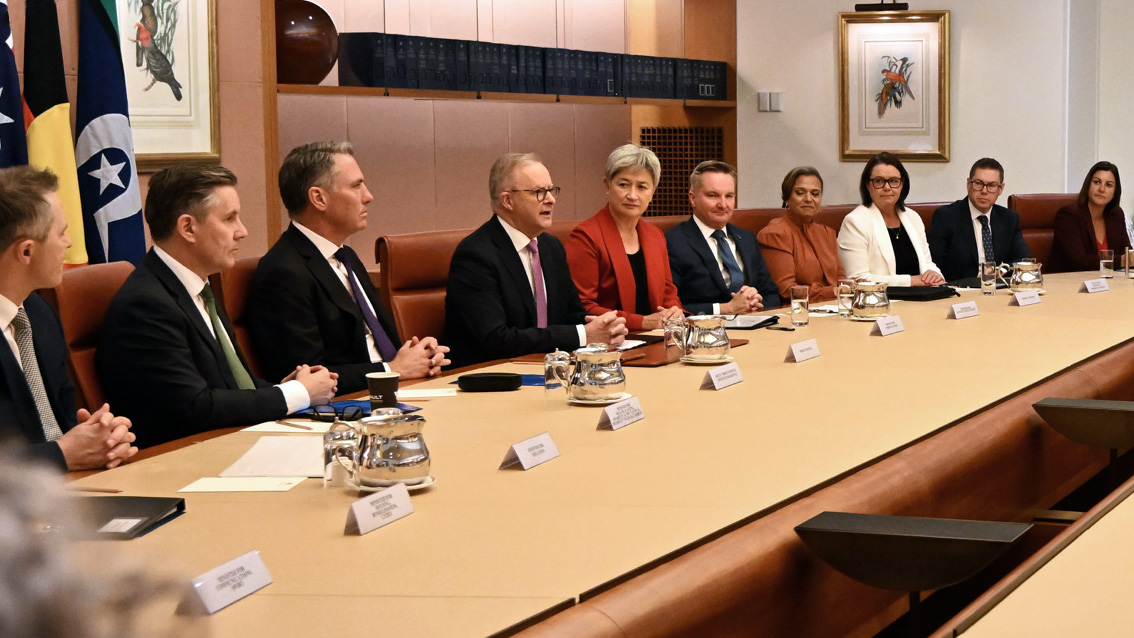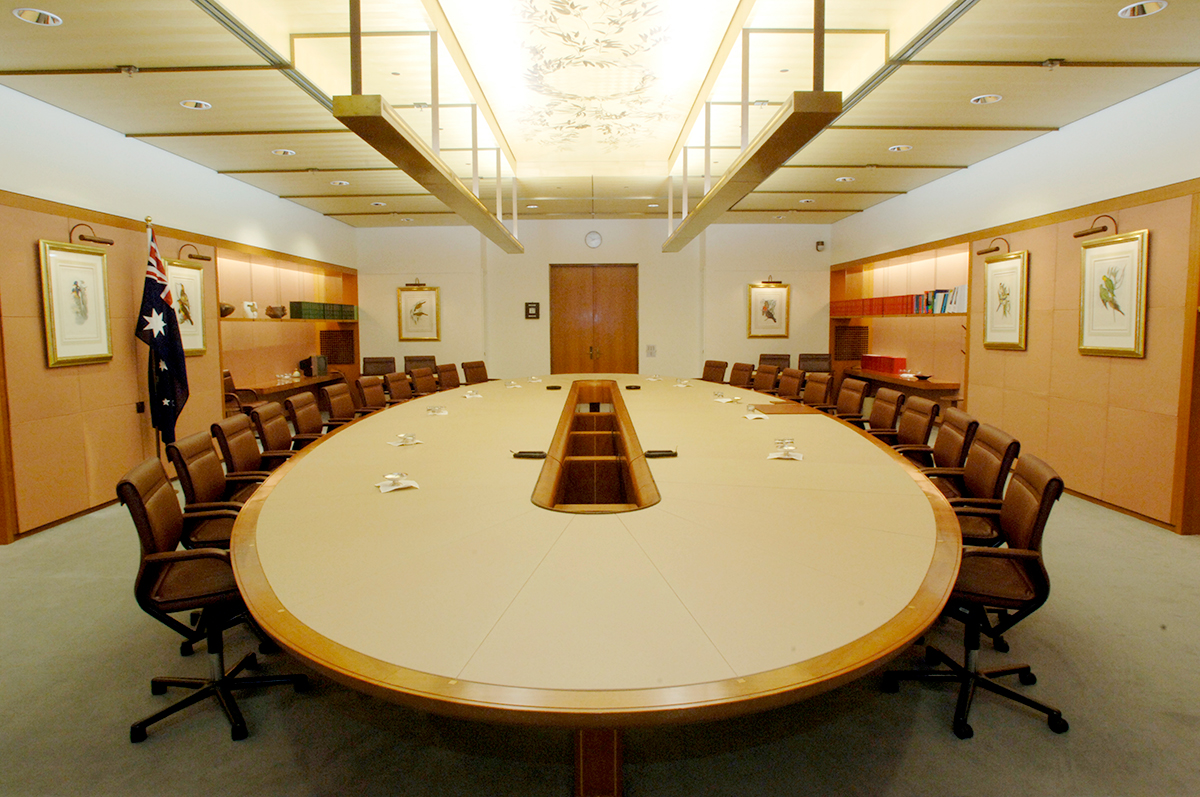Cabinet
Cabinet is the top decision-making group within the Australian Government. Find out more about who is in Cabinet and how it works with this fact sheet.
What will I learn?
- Cabinet is a group of senior members of the government including the Prime Minister.
- Cabinet meets to decide on government policy and national issues.
Curriculum alignment
Year 6 ACHASSK143
Year 7 ACHCK048
Year 9 ACHCK103
Year 10 ACHCK090
What is Cabinet?
Cabinet is a group of top-level members of the Australian Government. It includes the Prime Minister and about 20 ministers who are part of the executive government. They meet to discuss current problems for Australia and how these can be solved. Cabinet's role is to develop government policy and make decisions about national issues.
Cabinet meetings
The Cabinet in session

Mel Adams/DPS Auspic
Description
Cabinet is a group of senior ministers in the government including the Prime Minister. The members of Cabinet are sitting around a large wooden table in the Cabinet Room having a meeting. In Cabinet meetings, ministers decide on government policy and national issues.
Copyright information
Permission should be sought from DPS AUSPIC for third-party or commercial uses of this image. To contact DPS AUSPIC email: auspic@aph.gov.au or phone: 02 6277 3342.
- discuss their plans to take action on issues – policies
- come up with solutions to national problems
- present bills – proposed laws – prepared by government departments. Cabinet considers these bills and recommends whether they should be introduced into Parliament or if changes should be made.
Usually, only Cabinet ministers attend Cabinet meetings. Sometimes other members of the government or people with expert knowledge are invited to attend to discuss a bill or an issue Cabinet is considering.
In Cabinet meetings, ministers can speak freely about issues. Once Cabinet has made a decision, all Cabinet ministers are expected to support the decision publicly. This is known as Cabinet solidarity.
Meetings may be held in the Cabinet Room in Parliament House or in other places across Australia. The Cabinet Room in Parliament House is opposite the Prime Minister’s office and close to ministers’ offices. The room is highly secure. Mobile phones and computers cannot be used. High security is essential because Cabinet discusses confidential and secret matters that affect the safety and security of the nation.
Written records of Cabinet meetings are made but are kept secret for 20 years. After this time, Cabinet documents are made available for the public to read.
Accountability
The Prime Minister and Cabinet ministers are members of parliament, which means the Parliament can keep a check on their actions and decisions. The Parliament can scrutinise – closely examine – the government. Each day in the House of Representatives and the Senate, ministers are asked questions about government decisions during Question Time. Ministers decisions are also scrutinised in Senate estimates, where senators examine how the government plans to spend taxpayers' money.
The Cabinet Room, Australian Parliament House

DPS Auspic
Description
This room, the Cabinet Room, is where the Prime Minister and senior ministers (the Cabinet) meet to make decisions for Australia. The Cabinet Room has a large oval-shaped table. There is space around the table for members of Cabinet to sit. Cabinet members discuss and make decisions about government policies in this space. Cabinet meetings are confidential.
Copyright information
Permission should be sought from DPS AUSPIC for third-party or commercial uses of this image. To contact DPS AUSPIC email: auspic@aph.gov.au or phone: 02 6277 3342.
Operation
The Cabinet Room, Australian Parliament House

DPS Auspic
Description
This room, the Cabinet Room, is where the Prime Minister and senior ministers (the Cabinet) meet to make decisions for Australia. The Cabinet Room has a large oval-shaped table. There is space around the table for members of Cabinet to sit. Cabinet members discuss and make decisions about government policies in this space. Cabinet meetings are confidential.
Copyright information
Permission should be sought from DPS AUSPIC for third-party or commercial uses of this image. To contact DPS AUSPIC email: auspic@aph.gov.au or phone: 02 6277 3342.
Although it is an important part of Australia’s system of government, Cabinet is not mentioned in the Australian Constitution. Cabinet and the way it functions is based on past practice and traditions, some of which come from the British Parliament.
The government decides how Cabinet will operate. The Prime Minister chairs Cabinet and has a strong influence on how it works. Some prime ministers have used a majority vote in Cabinet to decide on an issue; others have preferred to try to reach a consensus – where all ministers generally agree to the decision.